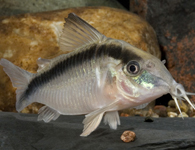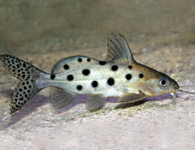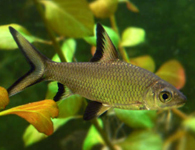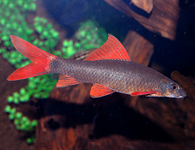Community Fish

glofish danios and tetras
Community represents the largest collection of fish under the freshwater banner. The term “Community”, however, seems to inspire misconceptions.
What are Community Fish?
Within the Community category, you have a wide variety of species with differing levels and types of aggression. The most common misconception is that all community fish are compatible and get along fine. This couldn’t be further from the truth. There does not exist a completely harmless, non-aggressive species. All species lie somewhere on the sliding scale of aggressive behavior.
See our Freshwater Compatibility Chart:
But, the one thing that defines a “Community” aquarium is that it is populated with varying cohabitating species. It is important to understand the aggressive tendencies of the species you are considering and this is one way The Ocean Floor can help! It is important to note that live animal individuals can sometimes defy recognized special tendencies too. Community also includes many species commonly referred to as Semi-Aggressive and Brackish.
There are several categories under the Community banner:
- Characins: Tetras, Rasboras, Barbs, Danios, and Hatchetfish
- Livebearers: Mollies, Platies, Swordtails, Guppies, and Halfbeaks
- Mormyrids: Elephant-noses, Baby Whales, and Baby Dolphins
- Certain Catfish: Cory Cats, Glass Cats, Synodontis, Plecostomus, and Algae Eaters
- Loaches & Botias
- Certain Sharks: Redtail Sharks, Rainbow Sharks, Bala Sharks, Apollo Sharks, Roseline Sharks, Black Sharks, and iridescent Sharks
- Rainbowfish
- Labyrinth Fishes: Gouramis and Bettas
- Pufferfish
- Polypterus Species and Spiny Eels
- True Eels
- Scats and Monos
- Butterflyfish
- Killifish
- Headstanders
- Gobies
There is definitely something special about owning a community aquarium and watching different species interact with each other. Typically a community aquarium is divided into 3 strata or layers when adding fish to it: Top Swimmers, Middle Swimmers, and Bottom Dwellers. Though not all fish obey these guidelines all the time, it is important to take into account which layer a particular species normally inhabits if you want coexistence.
Community Fish at The Ocean Floor takes up a little more than half of The Tropical Fish Room and our Associates are eager to help guide you to the right species to enhance your Community Aquarium experience!
Ocean Floor Store offers these types of Community Fish on a regular basis
Cory Catfish

Also called Cory Cats, Cory Fish, and Corydoras. They are popular for their hardiness and appearance. Cory’s look like they’re wearing armor because of the bone-like plating on their sides. Bronze is the most common color you will see.
Synodontis Catfish

This type of catfish comes in all kinds of colors and patterns. From the Skunk pattern you see above to leopard patterns. They have a habit of hanging upside-down in tanks, giving them the name upside-down catfish.
Glass Catfish

These transparent catfish add a unique element to any tank. You can actually see their bones and organs! They are a calm fish and require a calm environment to thrive.
Clown Loach

Also known as the Tiger Botia, these fish can grow over a foot long in their natural habitat of Borneo. They are peaceful fish and can make a home with many other types of fish.
Kuhli “Coolie” Loach

These are pretty “cool” bottom dwellers. You’ll often see them burrowing in substrate or plants. They like hanging out with other loaches. Netting them can be tricky, as they have sharp spines below the eye that rise up if they feel threatened.
Gold Dojo Loach

These amazing loaches are a stunning piece to add to any aquarium. They scavenge for food on the bottom of the tank and lead peaceful lives.
Red Tail Shark

The bright, red coloring on the tip of the tail is how this fish got its name. They are territorial and will chase other fish away, especially during feeding time. However, they are very active and entertaining to watch.
Bala Shark

These guys are also known as tricolor sharks. You can see three clear colors on their bodies: black on the tips of the tail and fins, silvery white on the belly, and brown or bronze on the top.
Rainbow Shark

These territorial fish are better suited to experienced aquarium owners. They need plenty of places to hide to reduce their protective nature. However, they can add color and attitude to any tank environment.


